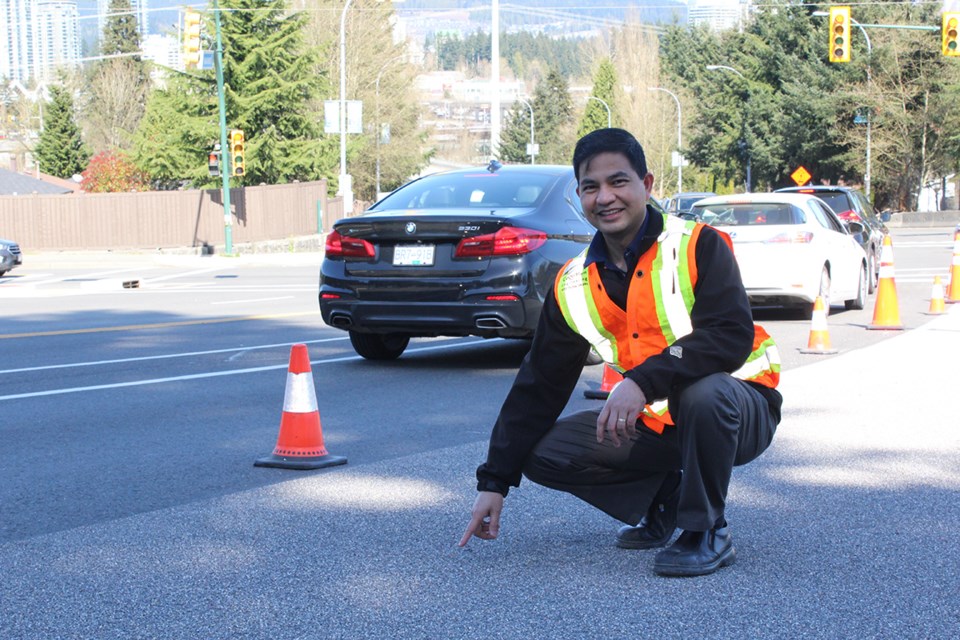High-crash sites in Coquitlam are getting a special treatment by the city.
This week, four intersections along Mariner Way are being layered with High Friction Surface Treatment (HFST), a high-quality aggregate that’s bonded to new pavement in a bid to slow drivers down — especially when the roads are wet.
A total of 2,524 sq. m. of HFST is being applied at the following intersections with Mariner:
• Dewdney Trunk Road
• Dolphin Street
• Windward Drive
• Hawser Avenue
Edwin Dela Rosa, who is overseeing the capital project for the municipality, said ICBC statistics show about 200 collisions at the Mariner/Dewdney location alone, over the past five years.
“It’s very good for hills like Mariner because, if drivers brake downhill before the traffic lights, there is friction between the surface and the tires,” he said.
Still, he said, while the resistance helps, “the driver is always in control.”
An American product, HFST doesn’t smooth out for five to seven years; however, its life span can run up to 12 years, Dela Rosa said.
And the resin or polymer binding locks the aggregate in place, making it durable for arterial routes with heavy braking and even snow plowing. HFST can also compensate for inadequate geometric designs in the road, such as sharp curves and different elevations.
Coquitlam hired an outside crew to pour and spread the base on Mariner Way, which was repaved last October. HFST is best applied on relatively new asphalt, Dela Rosa said, and in good weather when the temperature is above 10 degrees Celsius — as forecasted for this week.
Meanwhile, HFST will also be added to Lougheed Highway/Dewdney Trunk Road this week (on the two westbound lanes on Dewdney, west of the intersection). And the two southbound lanes (heading toward Vancouver) at Lougheed/Pitt River Road are also on the books for future application; other locations are also under review by the city’s traffic department.
WHERE ELSE IS HFST?
The road grip isn’t new for Coquitlam: It’s also at the west end of Dawes Hill (approaching Brunette Avenue); Austin Avenue eastbound (approaching Mariner Way); and the lower sections of Laurentian Crescent and Decaire Street.
In 2018, as part of a $3.9-million pilot project to better motorist safety, the B.C. government installed the skid-resistant overlay at 10 high-collision areas in the Lower Mainland. They are at:
• Highway 1: Brunette Avenue off-ramp (eastbound/westbound) in Coquitlam
• Highway 1: Capilano Road off-ramp (westbound) in North Vancouver
• Highway 1: Lonsdale Avenue off-ramp (eastbound/westbound) in North Vancouver
• Highway 1: Willingdon Avenue off-ramp (eastbound) in Burnaby
• Highway 7: 203 Street intersection (eastbound) in Maple Ridge
• Highway 7: 207 Street intersection (eastbound) in Maple Ridge
• Highway 7: Kennedy Road intersection (eastbound/westbound) in Pitt Meadows
• Highway 7: Laity Street intersection (eastbound) in Maple Ridge
• Highway 10: 120 Street/Scott Road intersection (eastbound/westbound) in Surrey
• Highway 10: 176 Street intersection (eastbound/westbound) in Surrey
According to the Federal Highway Administration in the United States, HFST can prevent or reduce collisions by as much as 70% on wet roads.





